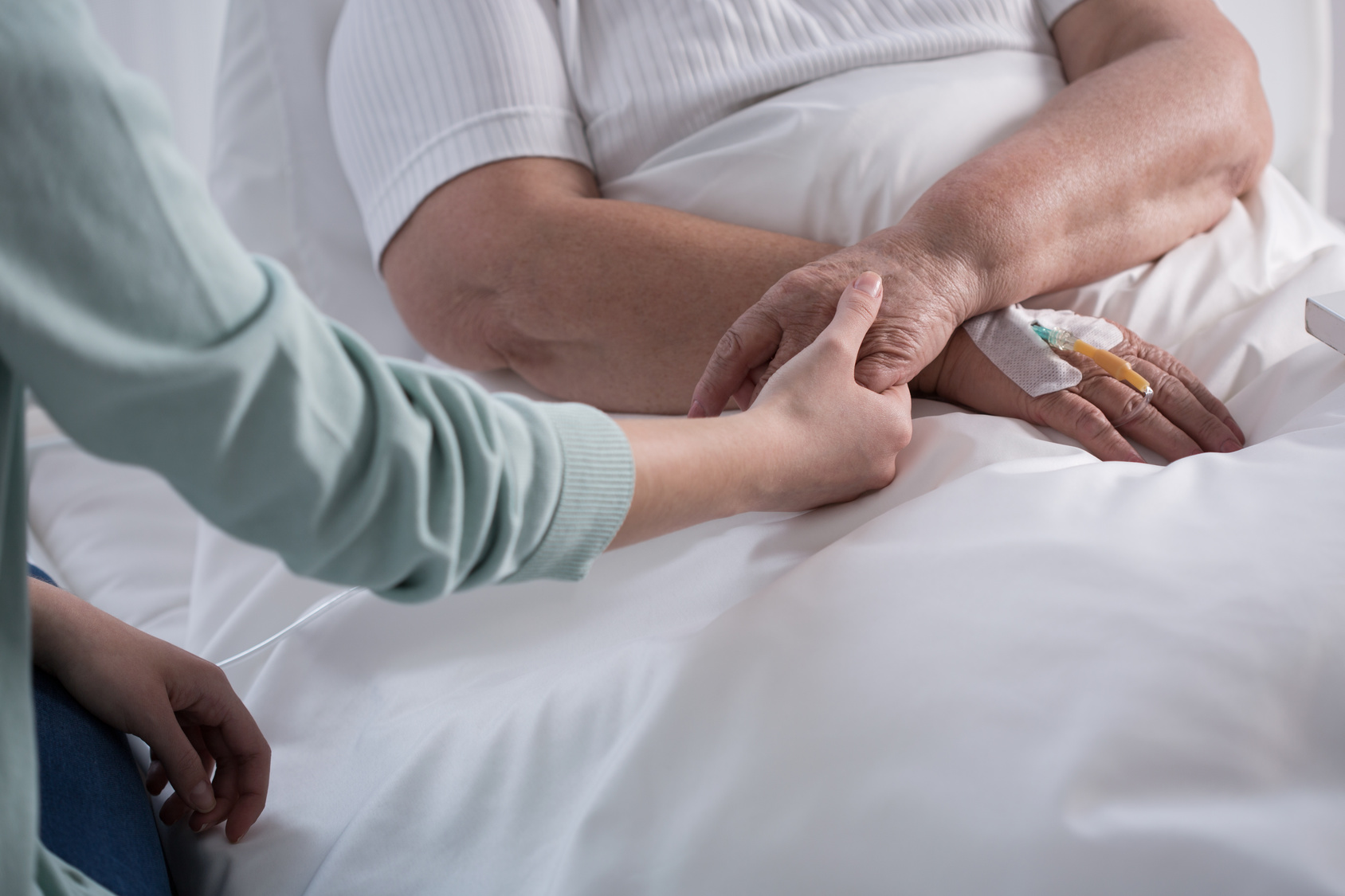by Kimberly Spering, MSN, FNP-BC
I met this patient on an early spring day. The snowstorm of the past month was but a distant memory. It took me a few passes by the driveway to realize that, yes, this was the home of my patient. I drove up to the house, spaced back from the main road, with parking signs noted about 50 feet from the abode.
Gathering my computer bag and backpack with my medical supplies, I walked up the graceful arch of the front walk. Ringing the doorbell, I braced myself for the inevitable nuances of a first visit in my palliative NP role.
After my introduction, the patient’s spouse graciously welcomed me into their home of 60 years. A medical professional in his past life, my role was understood and welcomed. That doesn’t always happen in my work… but I appreciated the ease with which I was accepted into their home.
After a dissecting thoracic aneurysm and subsequent severe CVA, the patient had spent months in a skilled nursing facility. Quite honestly, the patient had the proverbial “nine lives” of a cat, given her medical set-backs. The spouse journeyed to the nursing home three times daily to feed her. Why? “No one else will take the time.” After many long months of care, the insurance was running out. “It would cost me over $500 daily to keep her there. I want to care for her at home.” So, she was discharged from the skilled nursing facility to the home that she stayed in since her marriage.
I met this lovely woman, a shell of her previous existence, but yet…she maintained the spark of her intelligence, even if her body could not respond in kind. She had visual deficits and could only track from one side. I positioned myself on her good side to talk with her. Her words were few, her gestures limited… but still, I could sense the proud, dignified woman that she had been prior to her illness.
“I want to help you… to manage your symptoms, and to help you achieve your goals of care. Tell me what is most important to you at this time.”
Her words were limited. Her husband filled in the details. I sensed his exhaustion from the past many months of care… trying, unsuccessfully, to have her return to her former level of functioning. He was not initially willing to acknowledge her level of disability. Slowly, I discussed her overall status.
“I’m concerned that she is having symptoms that are not controlled. I am worried that her health situation is grave, and that if something unexpected happens, that she will not survive. Has she discussed her end-of-life wishes if her health deteriorates?”
Slowly, in a trance, he looked up at me. The emotion of relief washed across his face. “No one has talked about this… until now,” he said. “I’m worried about what will happen if she declines. I know that she will not survive.”
Gently, I discussed her end-of-life wishes. Reiterated that a “no code” status does not mean “no care.” I know that I personally would not want to live in that boxed-up state for any amount of time. He was frank, almost outspoken in his words about her wishes. I documented these issues for future use.
However, at this point, he wanted everything possible to be done at this point, including full code status. We discussed the ramifications of what running a code would entail for her. No matter — this was his wish. She agreed with him. And we will honor her wishes. However, honestly, the chance of survival in a code scenario is slim-to-none. All I could do is document this discussion and the response.
So what is a “life worth living?” Is it someone who is but a shadow of her prior experience? Is it someone with full capacity, but physical limitations? Or… is it someone who says “life is worth living in this moment,” no matter what that moment may be. It may not be your or my moment… nor our own decision, but rather, someone who chooses LIFE, no matter what the experience, what the cost. A life worth living is determined by EACH individual, in EACH situation. We may have a different perspective on that issue, but our own experiences affect our reactions. We owe it to our patients to ask those tough questions.
I encourage you to discuss these issues with your patients, particularly if they have an end-of-life illness. So often, I hear, “I don’t have time to discuss these issues.” I get it, having worked in an office setting most of my NP career. However, Medicare now reimburses you for these discussions, which, quite frankly, may be the most important ones you have with your patients.
Discussing end-of-life wishes is exceptionally difficult. Most of us don’t like to imagine that scenario. It’s uncomfortable for us as providers, as well as patients. However, if we can document a patient’s wishes, and give a last bit of dignity to that person in the end of life, particularly if he/she is unable to verbalize those wishes — we’ve done an extraordinary thing.
I challenge you to look at your chronically ill patients. Think about opening the conversation with these questions regarding serious illness:
- What is your understanding of where you are with your illness?
- How much information about what is likely to be ahead would you like from me?
- If your health situation worsens, what are your most important goals?
- What are your biggest fears and worries about the future with your health?
- What abilities are so critical to your life, that you can’t imagine living without them?
- If you become sicker, how much are you willing to go through for the possibility of gaining more time?
- How much does your family know about your wishes?
These serious conversation questions are crucial to open conversations and begin dialog with patients. Try asking these questions. It gets easier, the more often you do it. And…your patients and families will thank you.
Kim Spering has been a nurse for over 25 years and worked as an NP over the past 15 years in Family Medicine, Women’s Health, Internal Medicine, and now Palliative Medicine. She serves as an editorial board member of Clinician 1 and submit blogs to the website, with a goal of highlighting both the clinician and patient experience in health care.








